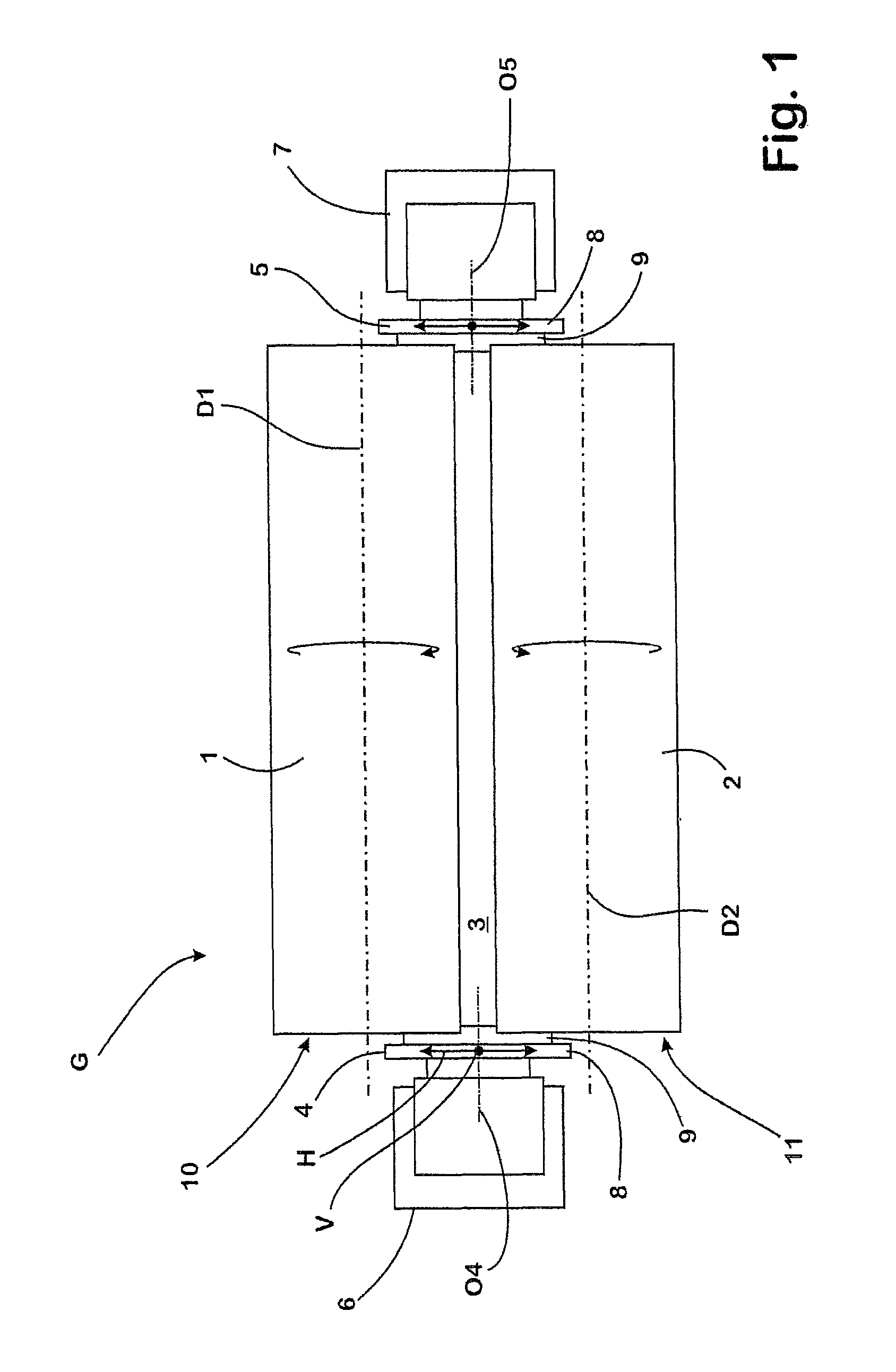Method and twin roll caster for the production of strip cast from a molten metal
a technology molten metals, which is applied in the direction of twin roll casters for the production of strip cast from molten metals, which can solve the problems of abrasive wear of insert materials wear of side plates, and abrasive wear of insert materials, so as to minimize the risk of operational disruption through molten mass solidification in the contact surface region
- Summary
- Abstract
- Description
- Claims
- Application Information
AI Technical Summary
Benefits of technology
Problems solved by technology
Method used
Image
Examples
Embodiment Construction
[0039]The twin roll caster G has two casting rolls 1, 2, which each rotate in the opposite direction about a horizontally aligned axis of rotation D1, D2. The casting rolls 1, 2 delimit a casting gap 3 between them on its longitudinal sides.
[0040]On its narrow sides the casting gap 3 is sealed by a side plate 4, 5 in each case, which is respectively supported by an adjustment device. The adjustment devices each comprise a supporting structure 6, 7. The supporting structures 6, 7 each bear an oscillation device, which oscillates the side plate 4, 5 associated with it in each case, in the casting operation about an axis of oscillation O4, O5 in each case.
[0041]The side plates 4, 5 each comprise a steel support plate 8, which on its side associated with the casting gap 3 bears an insert 9 made from a refractory material. The shape of the insert 9 is selected in such a way that it superimposes the front sides 10, 11, associated with it, of the casting rolls 1, 2 in each case in an inser...
PUM
| Property | Measurement | Unit |
|---|---|---|
| axes of rotation | aaaaa | aaaaa |
| forces | aaaaa | aaaaa |
| abrasive wear | aaaaa | aaaaa |
Abstract
Description
Claims
Application Information
 Login to View More
Login to View More - R&D
- Intellectual Property
- Life Sciences
- Materials
- Tech Scout
- Unparalleled Data Quality
- Higher Quality Content
- 60% Fewer Hallucinations
Browse by: Latest US Patents, China's latest patents, Technical Efficacy Thesaurus, Application Domain, Technology Topic, Popular Technical Reports.
© 2025 PatSnap. All rights reserved.Legal|Privacy policy|Modern Slavery Act Transparency Statement|Sitemap|About US| Contact US: help@patsnap.com



